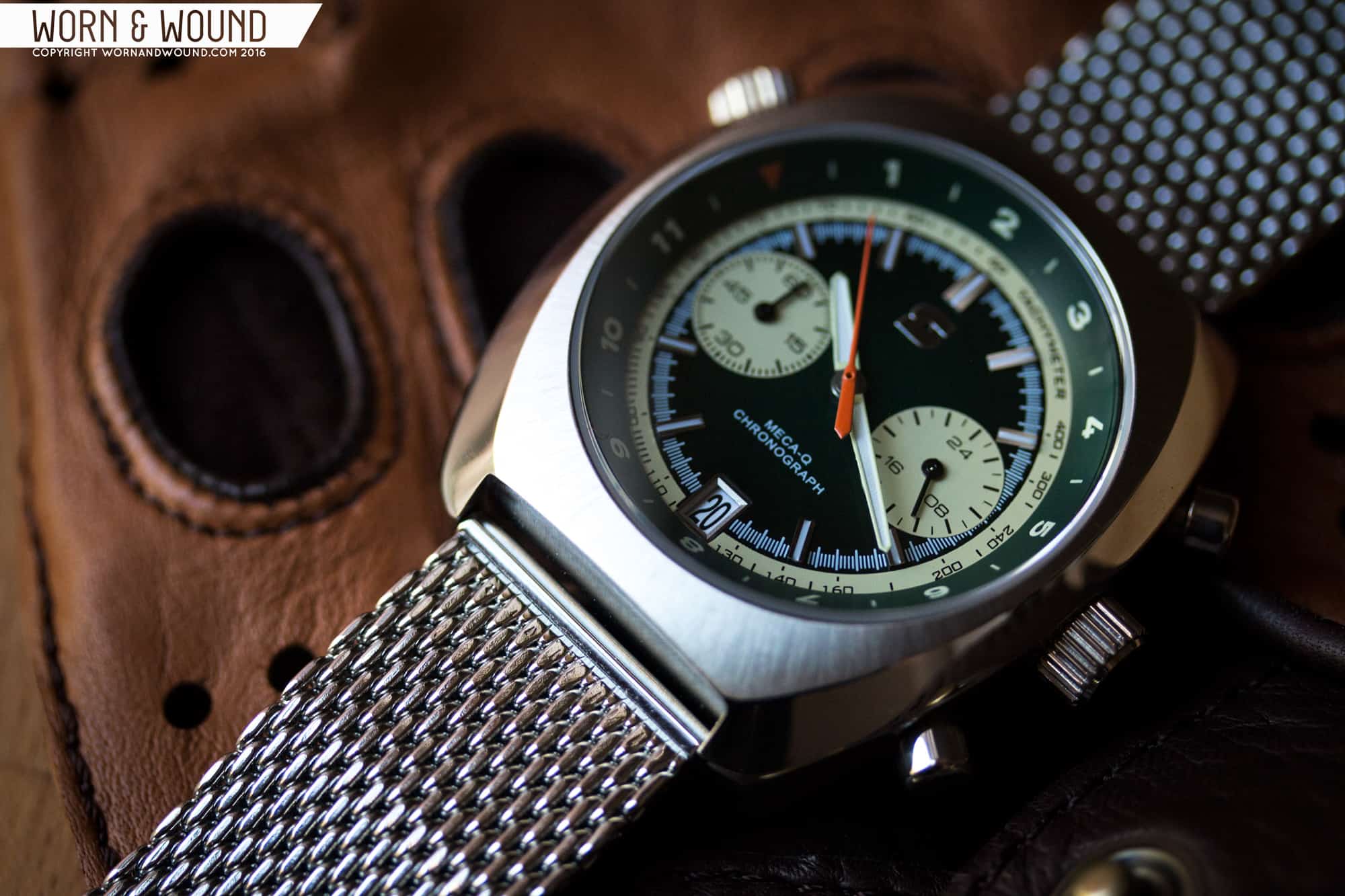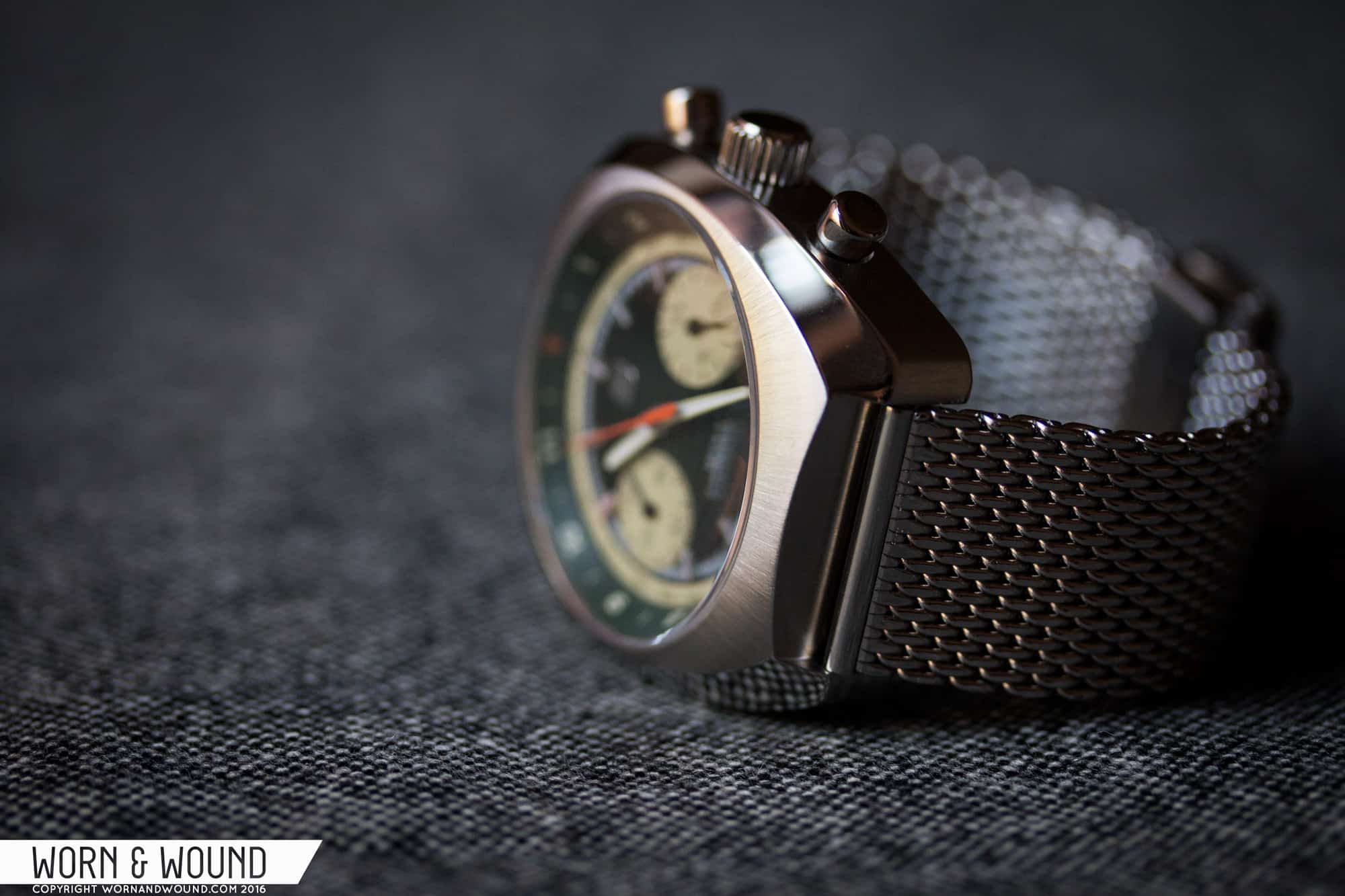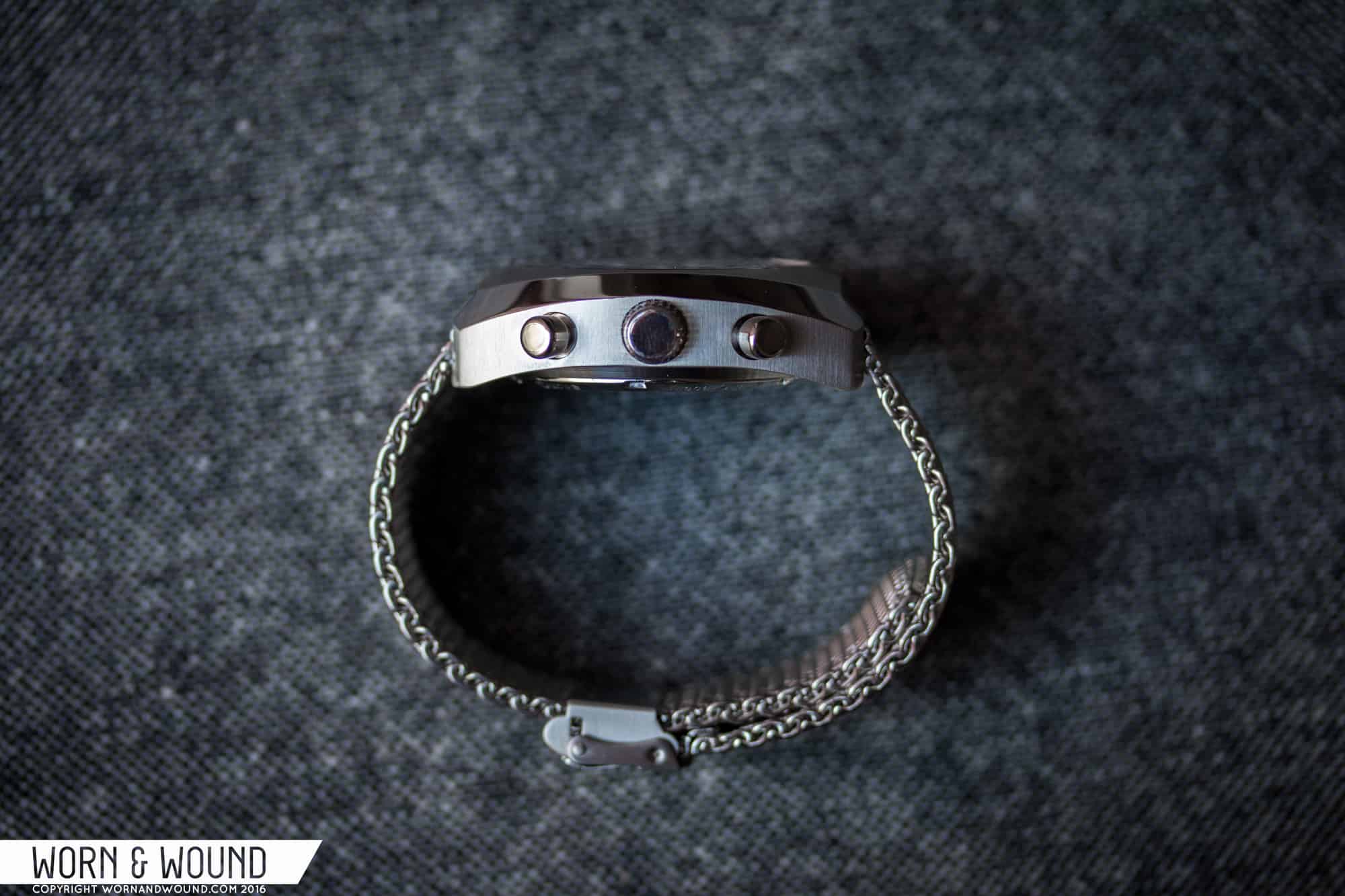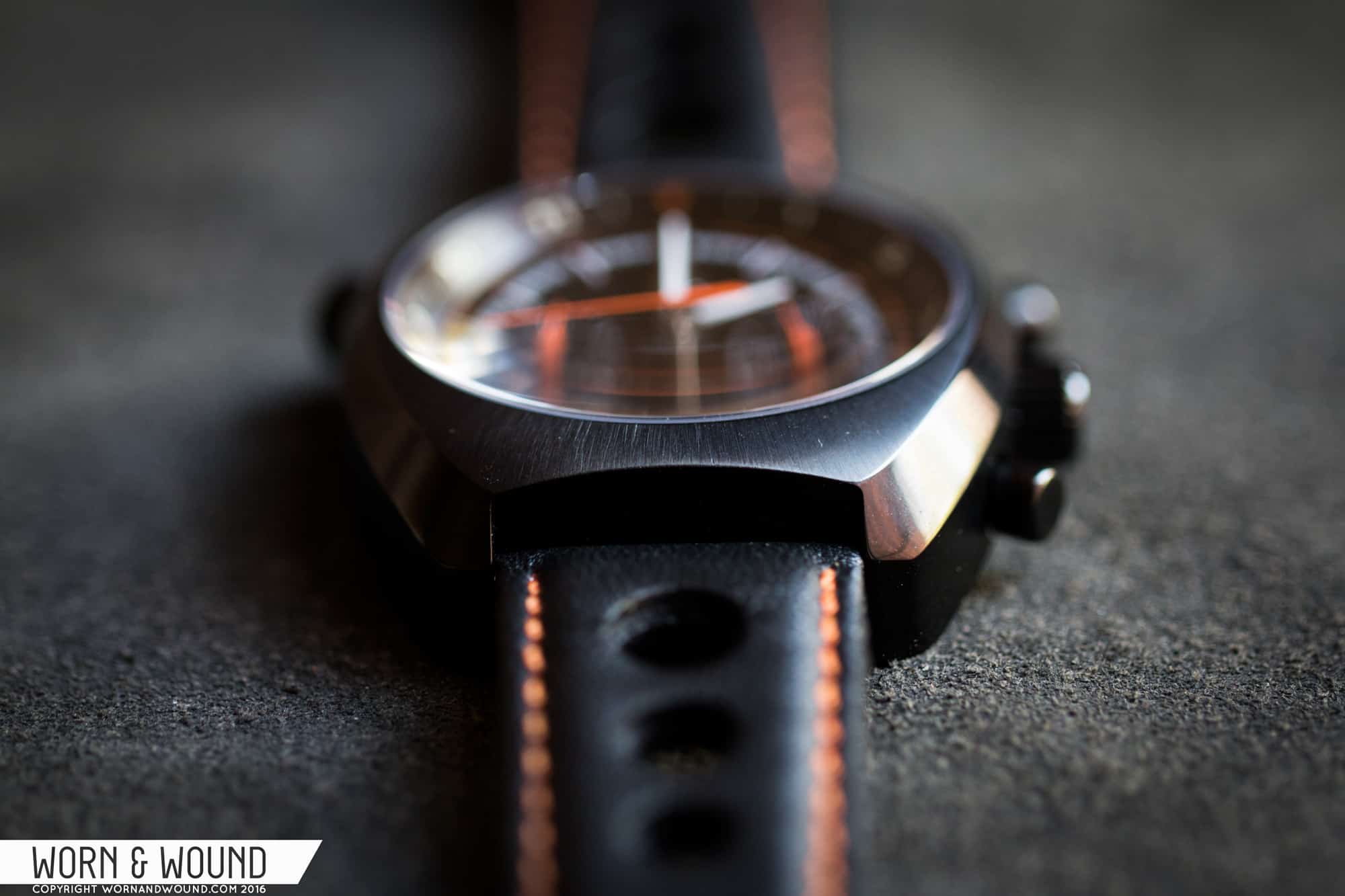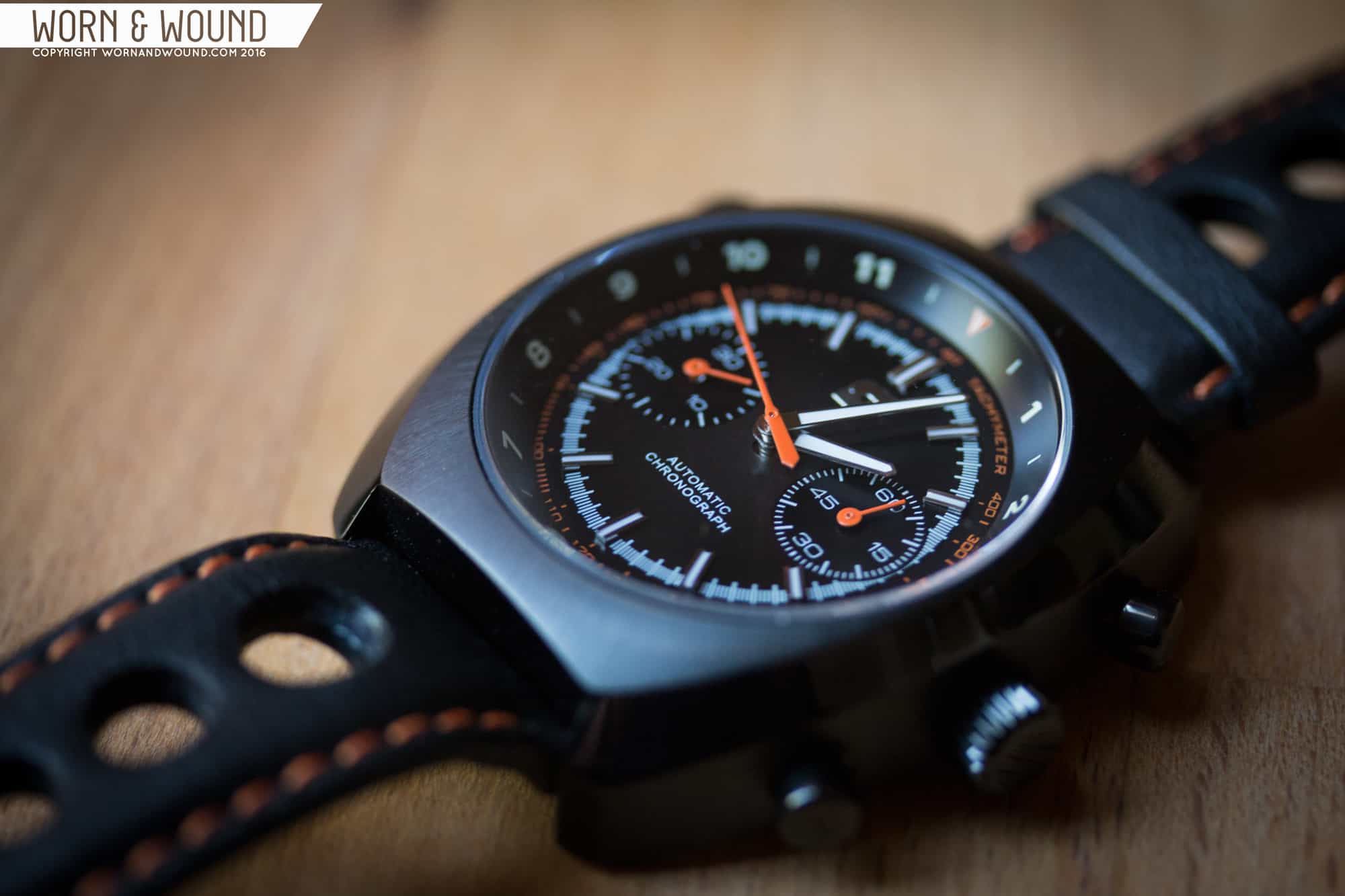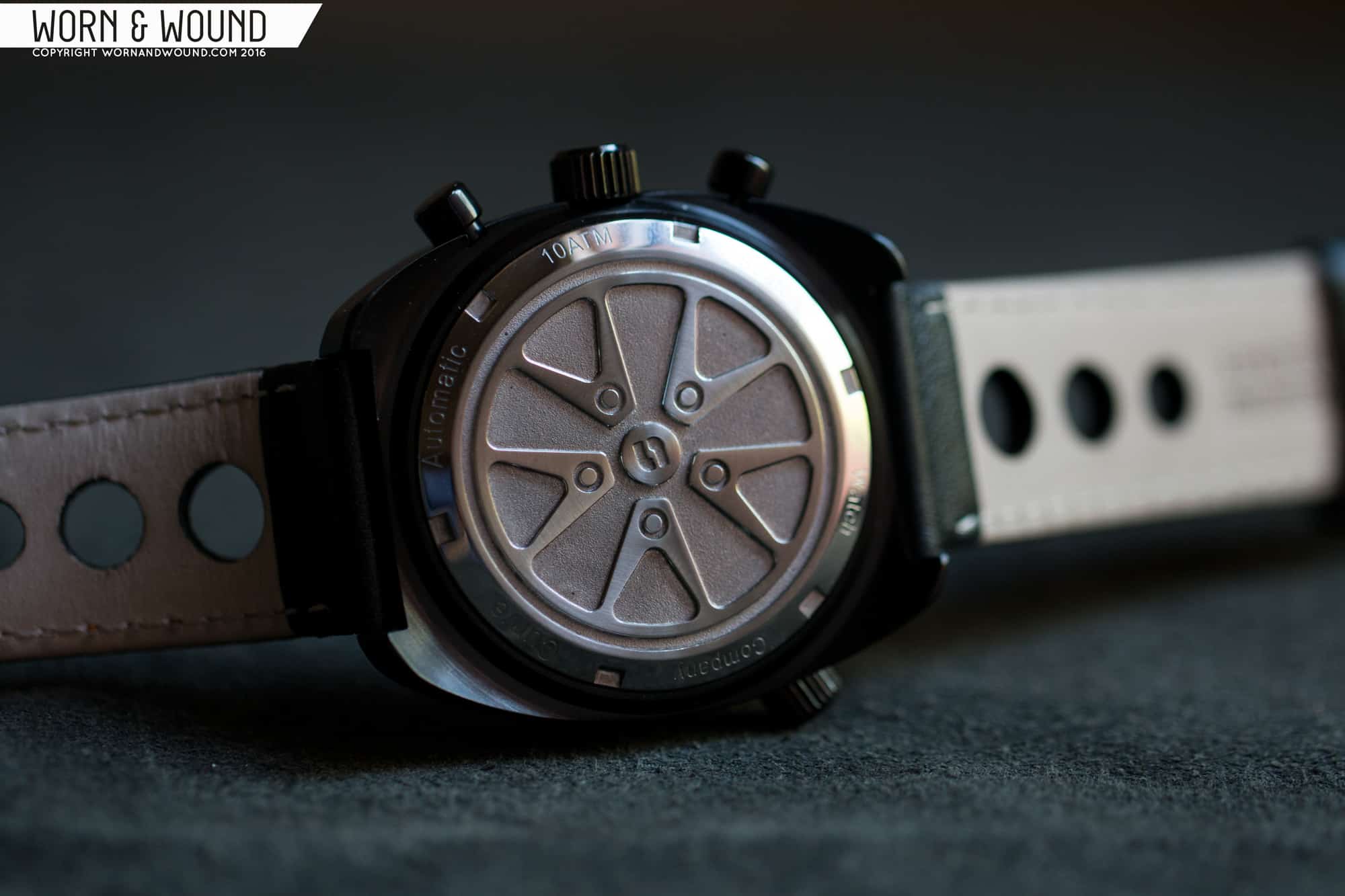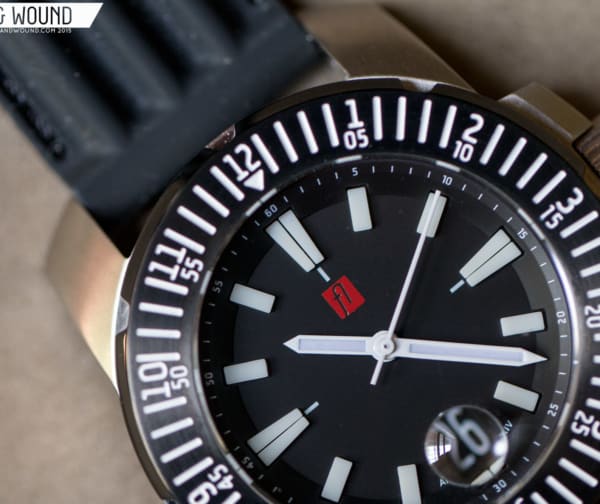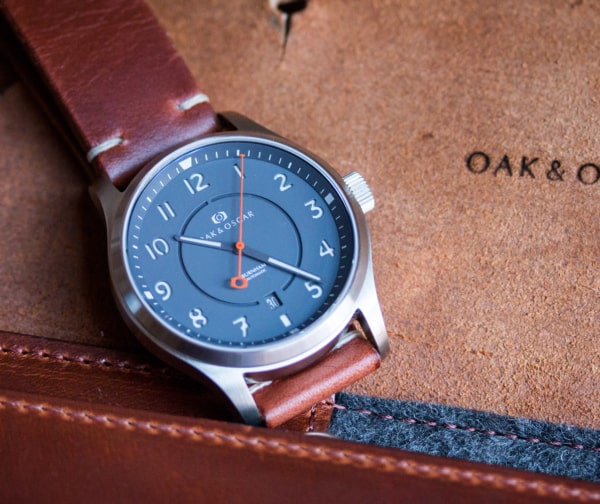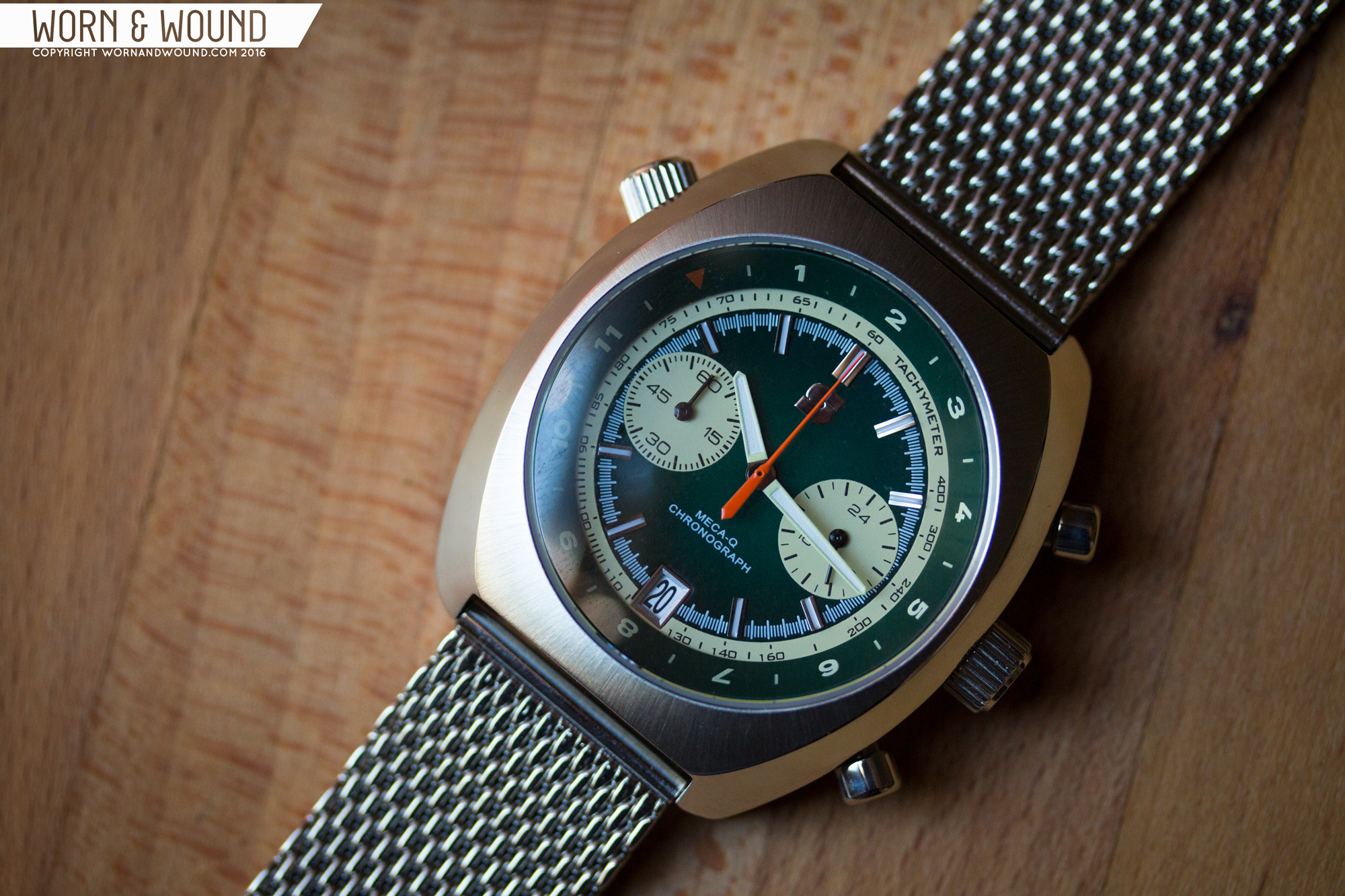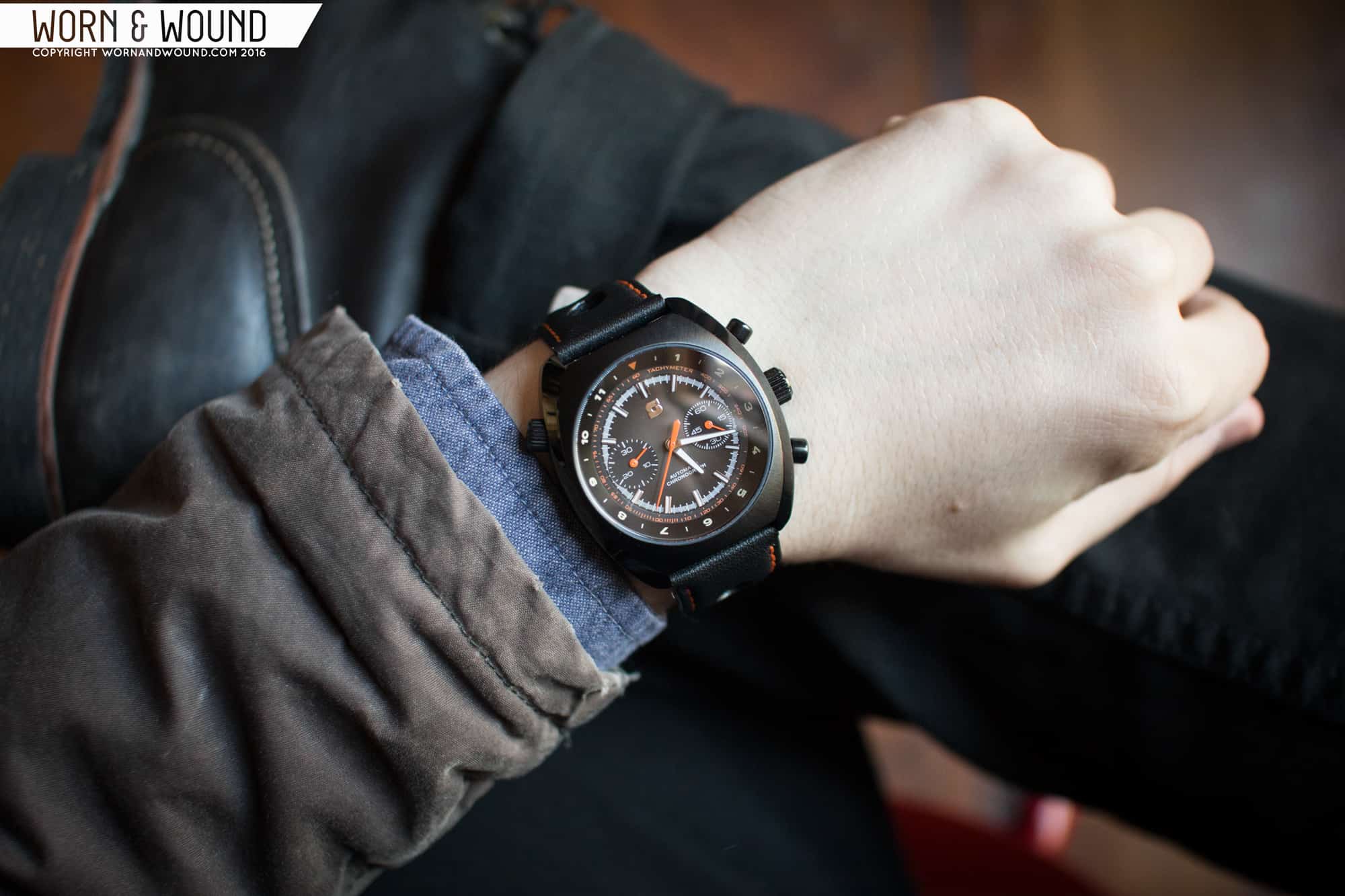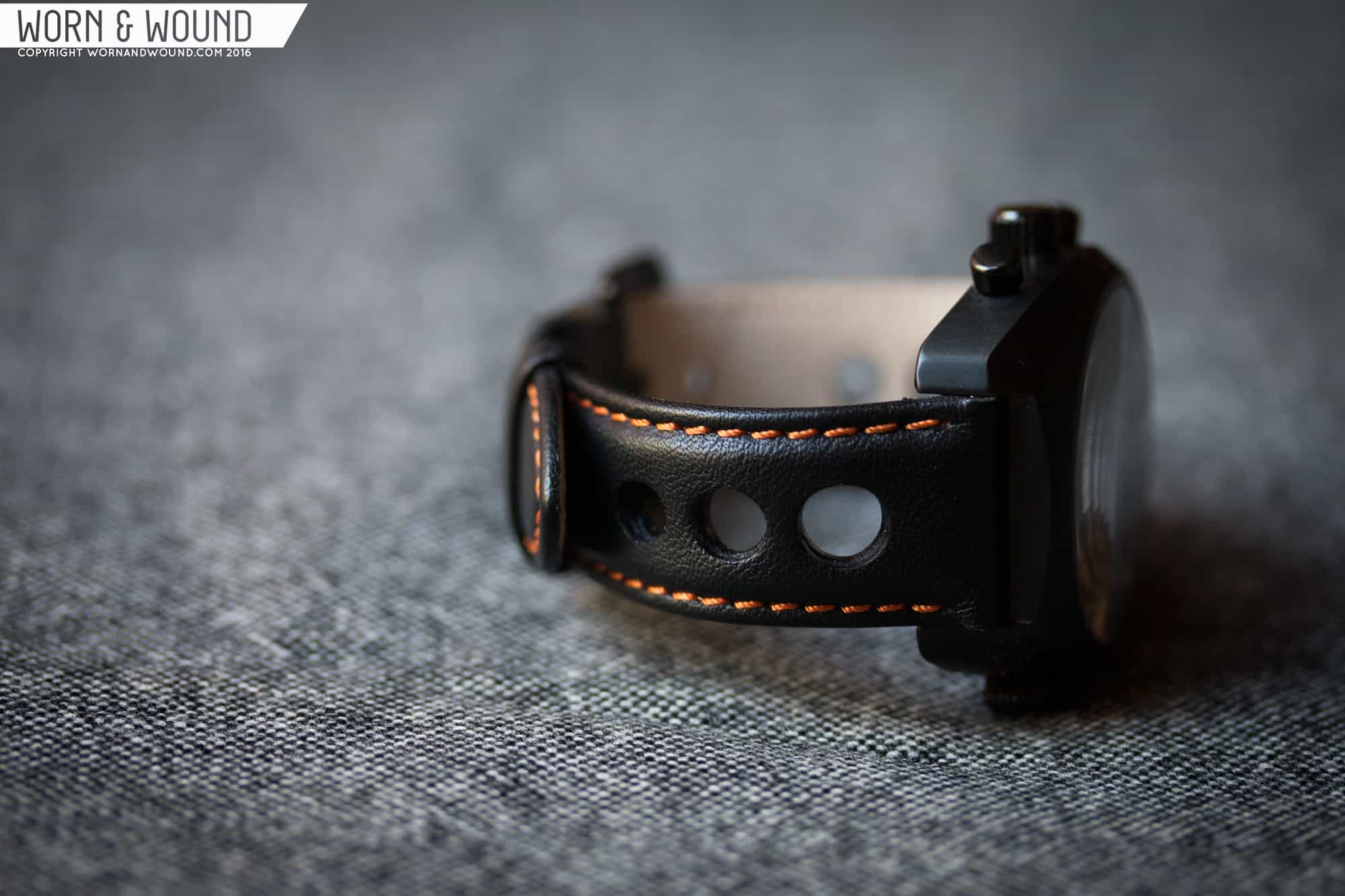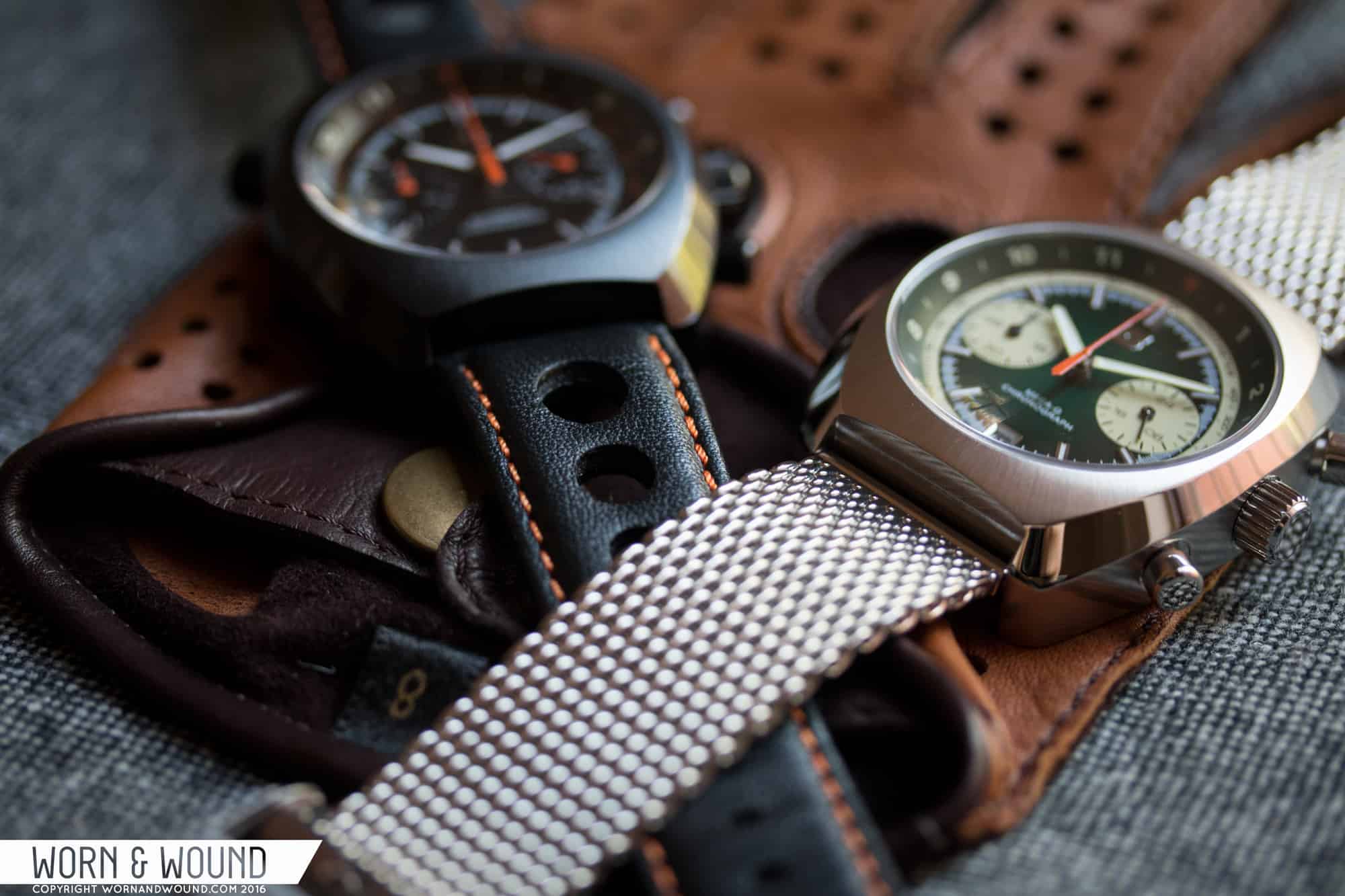When I first jumped into the world of watches, it was vintage racing chronographs that really hooked me in. Legendary pieces from Heuer, Seiko, Universal Genève and countless others would shape my taste in watches, and years later still form the backbone of my personal collection. With that in mind, the current explosion of ‘60s and ‘70s-tinged chronographs is fantastic to watch. With micro-brands like Autodromo and Nezumi leading the way, it feels like the whole industry is pushing to capture that sporty essence. Straton is another Kickstarter-based brand founded on chasing that ethos, and judging by the Curve-Chrono, one of the best. The Curve-Chrono blends diverse racing influences together with a choice of either a Seiko NE88 automatic or VK64 meca-quartz heart, and with prices starting at $330 (early bird pricing) it seems like a no-brainer. What’s it like to live with, though? We spent a week with it to find out.
Straton Curve-Chrono Review
Straton Curve-Chrono Review
Case
The case of the Straton Curve-Chrono is a greatest hits album of design cues, with little touches recalling the Heuer Autavia, Seiko 6139, and Omega Speedster Mark II. The overall shape, though, takes its lineage from a watch not often associated with racing—the Sinn 142. The 10 o’clock crown, short lugs, and broad top surface are all straight from the Sinn playbook, along with the wide bevel around the case edge which removes some visual heft from the case. From there, though, the Straton takes its own approach, with a mix of detailed brushing and mirror polish highlighting the simple but well-executed surfacing. From the top down, it’s pure ‘70s tonneau case, with a blocky stance that calls to mind the Seiko “Pogue” and the later Heuer Autavias that creates an imposing presence on the wrist. Along the side, the generous polished bevel keeps the 13.9mm height from feeling too slab-sided, and a tall 7x4mm crown flanked by round pushers make for easy access to the watch’s functions (author’s note: while the crown on our testers were unsigned, the final production model will have a crown signed with the Straton logo).
This design is available either in stainless steel or a well-applied black DLC finish, which ups the aggression level of the design quite a bit and makes it feel more race-ready. Around the back is one of the Curve-Chrono’s party pieces—a deep, sharply etched caseback featuring either a classic BBS or Fuchs wheel. The etching work here is superb, with some of the cleanest edges I’ve seen in this price range. Flanking the design is a rather sparse list of information, simply reading “STRATON WATCH COMPANY CURVE” along with the 10 atm depth rating and the movement.
Dial
Like the rest of the watch, the dial of the Curve-Chrono wears its influences on its sleeve. In true ‘70s chrono fashion, it’s pleasingly busy, managing to lay out piles of essential information while avoiding clutter and imbalance. The subdials at 3 and 9 (30-minute and running seconds for the automatic, 60-minute and running 24-hour for the meca-quartz) are in the Goldilocks zone for size, fitting in perfectly between the 2 and 4 (or 8 and 10) hour markers and just brushing the tachymeter ring on their outer edges. Applied split baton markers form the inner ring of the main dial, surrounded in turn by a 1/5 seconds track, a tachymeter ring, and finally a wide, steep rotating hours bezel.
This tall inner bezel gives the dial an almost bowl-like appearance and miles of depth. More importantly, however, it functionally extends the range of a 30 or 60-minute chronograph to 12 hours if one places the triangular marker over the current position of the hour hand. It’s a pragmatic addition, one this one shares with the Sinn 142 and Seiko Pogue, and one that I wish would make an appearance on more modern chronographs.
The theme of depth started by this bezel is continued through the inward-sloping markers, and finished off by the subtle blooming effect on the dial. This dial itself comes in a wild array of colors, with black, brown, blue, and green variants available. Our testers came in black and a deep British Racing Green, which give the watch two completely different characters. The black dial, with its bright orange accents, gives off a harder, more menacing vibe, while the cool green adds a pale yellow highlight and feels more laid-back and compact. Another plus for the green dial is the use of a contrasting color for subdials and the tachymeter ring, making chrono functions easily legible at a glance and adding some quirky panda dial appeal. The meca-quartz Curve-Chrono also features a beveled date window at 6, which while breaking the flow of the dial adds to the general Calibre 11 look of the piece.
Both variants are signed with the Straton “S” at 12, and feature two lines of text at 6 detailing their movement. In addition, both the automatic and meca-quartz share a similar tapering handset topped off by a heavily weighted orange chrono seconds. In terms of lume, the Curve-Chrono offers SuperLuminova C3. While lume performance was somewhat underwhelming during the review period, Straton has since assured us that the final production Curve-Chronos will receive upgraded lume.
Movement
It’s rare enough to review a watch with two different movements, and it’s rarer still to say that they’re both great choices. The sexier powerplant is naturally the Seiko NE88, previously seen here on worn&wound inside the Stuckx Bullhead. The specs for this one speak for themselves—both a column wheel and vertical clutch, 45-hour power reserve, and a buttery smooth 28,800 bph. It’s a supremely competent movement, very possibly the best choice this side of the Valjoux 7750, and one that deserves more exposure than it currently gets. On the other side, you have the Seiko VK64 meca-quartz hybrid system, shared by most of the current vintage chrono renaissance. The Autodromo Prototipo, Helgray Silverstone, and Nezumi Voiture all have one of these at their heart. While it invites skepticism at first, the VK64 quickly proves itself to be a solid choice in its own right. The hands sweep like a mechanical chronograph, reset like a mechanical chronograph, and barring some occasional mushy top pusher action, deliver the mechanical pusher snap. Purists may cry foul, but as a value proposition it’s hard to say no.
Straps and Wearability
If there’s something the Straton Curve-Chrono lacks, it certainly isn’t strap choice. Big-hole leather rally straps, Milanese mesh bracelets, and racing-livery NATO straps are all part of the package here, and it’s a testament to the Curve-Chrono’s versatility that it works so well on all of them. Each Curve-Chrono comes with a classic racing-inspired NATO strap that plays off the piece’s dial, in our case Gulf Racing blue and orange for the black dial and Team Lotus green and yellow for the green dial. They’re fun additions that add some casual comfort along with a subtle homage to some of racing’s greatest teams.
In my opinion, though, the real winner here is the rally strap. It’s nicely padded with orange contrast stitching that matches the orange dial highlights perfectly, and really makes the piece feel like a coherent whole. Likewise, the Milanese mesh bracelet is a great choice for the stainless steel case, adding some extra flash to the watch.
With a 42 x 47.4mm tonneau case, the Straton Curve-Chrono gives off some serious wrist presence, and the 14mm height definitely shows. That said, a ‘70s-inspired chronograph is just the place for a big ol’ hunk of metal on the wrist, and even on my 6.75 inch wrist it never felt oversized or unwieldy. This is definitely a watch that skews more to the casual end of the spectrum, but in stainless steel with the Milanese bracelet I wouldn’t put blazer duty past it in a pinch.
Conclusion
Like I said at the start of this review, there’s a special place in my heart for old-school racing chronographs. There’s a certain kind of magic there, a swagger and passion which sets them apart from the rest of the pack. With the way the current vintage market is, however, it’s almost impossible for many enthusiasts (myself included) to enjoy the original pieces for ourselves. I talked a bit in another review about jazz, and to really explain my feelings on the Straton Curve-Chrono I have to talk about music again, this time classic rock. This watch is the spiritual brother to the Strolling Bones, Led Zep-Again, and The Fab Four—it might not be the original, but it’s made by people who clearly love the material, enjoy the hell out of what they do, and at the end of the day the concert was only $20.
At $330 for early Kickstarter backers, the meca-quartz is a deal, and even at the full final price of $500 it’s well priced. Likewise, the current price for Kickstarter adopters for the automatic at $745 is a solid value, and at just under $1000 the full retail price is still very competitive. It’s pure fun, prepared by a passionate hand, and a strong contender against the current field of racing chronographs.









 Featured Videos
Featured Videos




